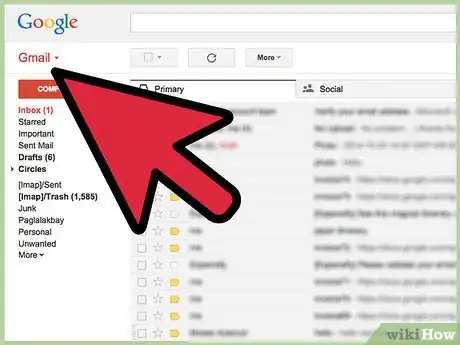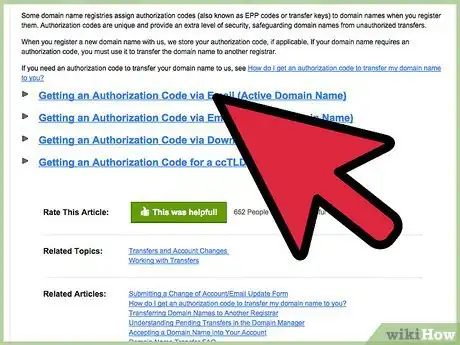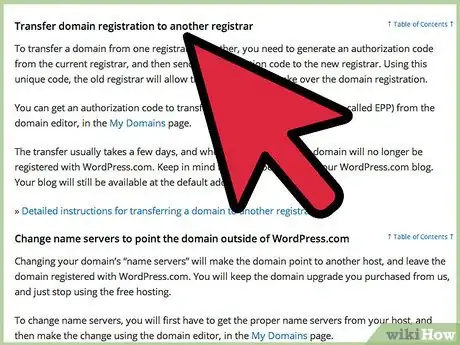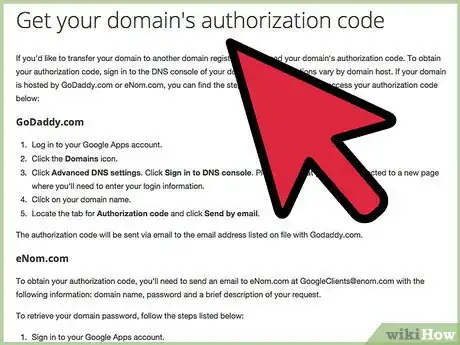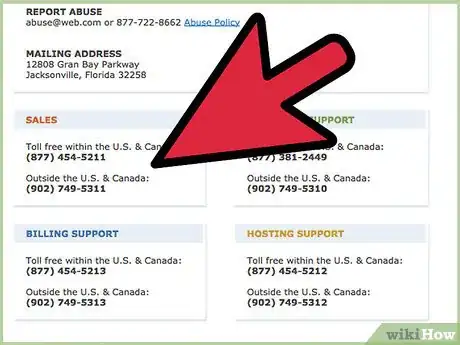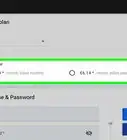wikiHow is a “wiki,” similar to Wikipedia, which means that many of our articles are co-written by multiple authors. To create this article, 9 people, some anonymous, worked to edit and improve it over time.
This article has been viewed 261,108 times.
Learn more...
Moving your website to a new host, and need to transfer your domain? Maybe you've found a better deal for domain registration. In any case, transferring your domain is a straightforward process, but will usually take several days to complete while you wait for all parties involved to approve the transfer. Most of the work is done behind the scenes; you'll just need to fill out a few forms.
Steps
Leaving Your Old Domain Registrar
-
1Ensure that your contact information is up to date. During the transfer process, you will be contacted by both your old registrar and your new one. They will use the contact information that is registered to your domain. You can update your contact information from your current registrar's domain control panel.
- If you don't remember who your current registrar is, you can look it up by performing a WHOIS search on your domain.
-
2Set up an email with another service. Many people use an email service that is tied to their domain. During the domain transfer process, you will likely lose access to your email service for your domain name. Make sure that you have another email account, such as a Gmail or Yahoo account, that you can use as a secondary means of communication.
- Make sure to set this email as your contact email in your domain registration information.
Advertisement -
3Request that your domain be unlocked. The process for this varies depending on the registrar you currently use, but you can typically unlock your domain from the Domain section of your domain control panel. Make this request to your current domain registrar.
-
4Request the Authorization Code. Every domain must provide you with this code within five days of your request. Some registrars allow you to generate your code in the control panel, while others will send it to your via email. You can generally request the code from the same section of the control panel that you used to unlock your domain.
- You will need this code in order to transfer your domain.
-
5Ensure that you have not recently transferred your domain. You cannot transfer your domain if it was created or transferred within the last 60 days. This is an ICANN (Internet Corporation for Assigned Names and Numbers) requirement, which is the organization that manages addresses on the internet.[1]
Transferring Your Domain
-
1Read the support pages for your new registrar. The actual process for transferring your domain will vary depending on which service you are transferring to. Make sure that you read the instructions for transferring posted on the new registrar's support pages for exact instructions.
-
2Visit the transfer page for the new registrar. You will likely need to create an account with the registrar before you can access this page. You can usually find the Transfer Domain section in the control panel for your new registrar, or you may be given the option to start the process when you create your account.
- You may need to contact the registrar's support staff to initiate a transfer if there is no option available on the website.
-
3Enter in the domain you are transferring. Make sure to include the TLD (.com, .net, .org, etc.). You may be able to transfer multiple domains at once. You do not need to include the www. part of the address.
-
4Enter in your Authorization Code. When asked, enter in the code that you received from your old registrar. Make sure that you enter the code exactly, or else the transfer will not process properly.
-
5Verify that you are authorizing the transfer. You will be contacted by your old registrar asking if you authorize the transfer. You will be either emailed or called, using the information you have provided to your old registrar.
- This is where having the correct contact information is important. If you are not registered as the owner of the domain, you will not be able to be contacted about the transfer even if you are the actual owner.
-
6Pay for the transfer. You usually will need to pay for your domain to be transferred. Some services require that you automatically renew for an additional year when you transfer. You may be able to get a free transfer for signing up with the new registrar.
-
7Wait for your settings to transfer. Your new registrar will configure DNS and name servers for you once the transfer has been authorized. After the transfer has been set up by the new registrar, it can take up to a few days for your DNS changes to be recognized worldwide. Your website should still be available.
- The actual process will vary depending on the registrar you choose. This may include an extra round of authentication from the new registrar. Check the support pages for the new registrar for details.
-
8Decide if you want a private domain. Some domain registrars allow you to mask your domain registration information so that your contact information is not available to the general public when a WHOIS search is performed. Instead, the registrar's information will be displayed, hiding your name, phone number, address, and email. Usually, private registration costs extra.
-
9Cancel your old service. Once the transfer is complete, you can cancel your service with your old registrar. Make sure that the transfer was completely successful before doing so, or your website may go down until the transfer goes into effect worldwide.
Community Q&A
-
QuestionI received a message from Domain WHOIS Update saying, "We have completed the change of registrant information on the domain." What should I do to change its host?
 John RooneyCommunity AnswerChange your nameservers, not the record on the WHOIS db. Your nameservers are where your domain looks for your site.
John RooneyCommunity AnswerChange your nameservers, not the record on the WHOIS db. Your nameservers are where your domain looks for your site. -
QuestionMy domain name is in someone else's name. How do I transfer it to my name?
 Community AnswerIf someone else beat you to register a domain name, then you have two choices: 1. Ask the owner of the domain to sell it to you (be aware that many people/organizations buy domain names just to sell them at vastly inflated prices). 2. Think up another name that no one else is using and register that.
Community AnswerIf someone else beat you to register a domain name, then you have two choices: 1. Ask the owner of the domain to sell it to you (be aware that many people/organizations buy domain names just to sell them at vastly inflated prices). 2. Think up another name that no one else is using and register that. -
QuestionHow can I keep my email address but move my domain?
 Community AnswerIt is not possible to keep the domain and email address separate, because the email address is bound to the domain. However, most hosts will allow you to migrate all your old emails to the new account so that you do not experience any changes.
Community AnswerIt is not possible to keep the domain and email address separate, because the email address is bound to the domain. However, most hosts will allow you to migrate all your old emails to the new account so that you do not experience any changes.
Warnings
- Whether you choose to transfer the domain to a new registrar or move the DNS only, there is likely to be some downtime. If there is a website currently in place, it could be inaccessible for a day or two during the transfer process. This would apply to any email addresses, listservs and forums that fall under that domain, as well.⧼thumbs_response⧽
About This Article
1. Request that your domain be unlocked.
2. Visit the transfer page for your new registrar.
3. Enter the domain you're transferring.
4. Enter the auth code if necessary.
5. Pay for the transfer.
6. Cancel your old service.

